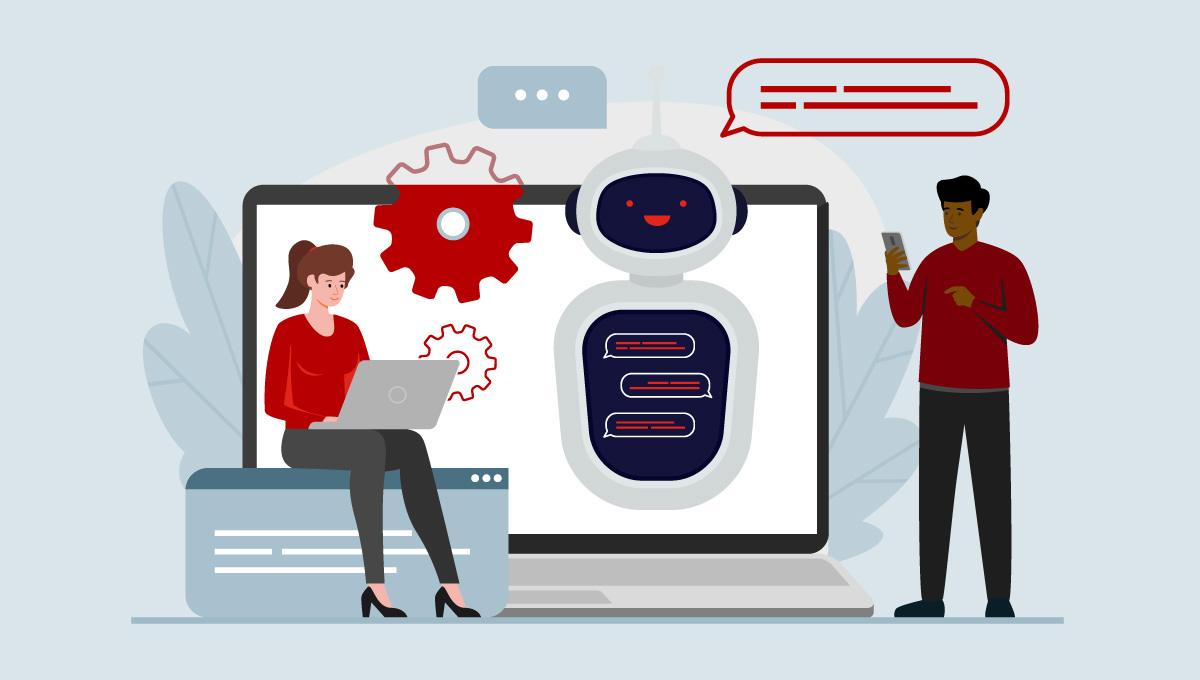
More than a year after the unveiling of ChatGPT, enterprises are cautiously introducing large language model-driven applications for a multitude of once-miraculous tasks.
The first question that many businesses face is whether to build their own generative AI (GenAI) solutions or purchase off-the-shelf applications.
In this blog post, we’ll differentiate between individual uses of GenAI and GenAI-driven applications and list the pros and cons of both sides of the build vs. buy argument.
GenAI Use Case Examples
Before a company can decide to make or buy a GenAI application, it needs to determine the use cases it will pursue. Let’s summarize the types of applications available in the GenAI application space today.
Though most have been released in the last six months, the field is remarkably diverse and sophisticated, catering to a wide range of internal company needs. These applications are designed to enhance efficiency, creativity, and decision-making processes across various departments.
Here are some key characteristics and use cases.
Content generation and enhancement
GenAI tools are adept at creating high-quality, engaging content for marketing, such as product descriptions, blog posts, and advertising copy, using internal development boards and product management documentation to seed the content.
HR support
In Human Resources, GenAI applications can be used to rationalize and align dozens of job descriptions and employee reviews, bringing consistency and quality to HR communications.
Legal and contract analysis
Going beyond simple document management and search, available applications utilize GenAI to review and summarize legal documents. These applications can sift through hundreds of legal contracts, extracting key clauses and summarizing terms (and rare omissions), significantly reducing the workload of legal teams.
Customer support automation
AI-powered chatbots and support tools can handle a high volume of customer queries, providing quick and accurate responses. These applications leverage historical customer support tickets, FAQs, and internal team documentation to imbue every answer with the collective wisdom of the entire support team. This not only improves customer experience but also frees human agents to tackle more complex issues.
Sales and CRM optimization
GenAI applications assist in sales and customer relationship management by analyzing customer data to provide insights, personalize communications, and anticipate customer needs, thereby enhancing the effectiveness of sales strategies.
Research and development (R&D) support
In R&D, GenAI tools help in using internal documents to identify and build patent applications, aggregate and summarize work in progress, and critique task scopes and descriptions to improve outcomes, thereby speeding up the innovation process. Coding assistants like AWS CodeWhisperer and Github Copilot suggest functions and syntax changes as you type, and even write unit tests as you code.
The applications exemplified above range from relatively simple (summarization) to astoundingly complex (real-time coding assistance). For those on the simpler side, why not ask your internal operations team to prototype something over a few days or weeks?
There’s no question that GenAI is a democratizing and disruptive technology.
GenAI enables use cases with little more than an API that were simply not possible (or even fathomable) a few years ago. But that does not necessarily mean you should roll out your own application. Here are a few thoughts on both sides of the build vs. buy generative AI debate.
Pros of Building In-House GenAI Applications
Skill development
Building in-house solutions accelerates learning and expertise in GenAI. It’s beneficial if the company is developing GenAI products or features for their own customers.
Agility and customization
Internal development can be more agile, allowing for customization to specific business needs and avoiding the lengthy procurement processes often associated with external vendors, especially when questions of data handling and security are involved.
Long-term stability
Relying on internal solutions avoids the risk of disruption from startup vendors who may not survive long-term market consolidation. For example, OpenAI’s feature announcements at their developer day in early November forced many startups to rapidly reconsider their business models.
Cons of Building In-House GenAI Applications
Resource intensive
Developing and maintaining in-house solutions can require significant resources, including a dedicated team of engineers.
Rapidly changing landscape
Keeping up with the fast-paced advancements (e.g., model technology improvements and cost reductions as competition intensifies) in GenAI technology can be challenging, potentially leading to outdated solutions.
Pros of Buying Off-the-Shelf GenAI Applications
Cost-effectiveness
Despite seeming expensive, off-the-shelf solutions might be more cost-effective in the long run compared to the continuous resource investment required for in-house development.
Specialized expertise
Vendors specializing in GenAI can provide more advanced solutions, leveraging their expertise and economies of scale and incorporating feedback from thousands of customers.
Future-proofing
External providers are more likely to continuously update and improve their offerings, keeping pace with technological advancements.
Cons of Buying Off-the-Shelf GenAI Applications
Potential for vendor lock-in
Reliance on a specific vendor can lead to dependency and potential issues if the vendor changes direction or exits the market.
Data handling and security concerns
Like any third-party application, you’ll need to do your due diligence around the vendor’s data handling and security policies. If they use foundation LLMs managed by other vendors such as OpenAI or AWS, you’ll need to review those vendors’ policies around the storage of customer prompts and use of customer prompts in subsequent model training.
Less customization
Off-the-shelf solutions may not perfectly align with unique business needs or require compromises in functionality or integration.
Bringing it all Together
The decision to make or buy GenAI applications hinges on balancing the agility and customization of in-house development against the cost-effectiveness, expertise, and potential future-proofing offered by external vendors.
Companies must assess their internal capabilities, opportunity costs, long-term strategic goals, and the specific needs of their internal teams to make an informed choice in this dynamic technological landscape.
And of course, the confident choice today may need to be revisited as GenAI technologies increase in sophistication and decrease in cost.
Read more on AI in the Enterprise:




